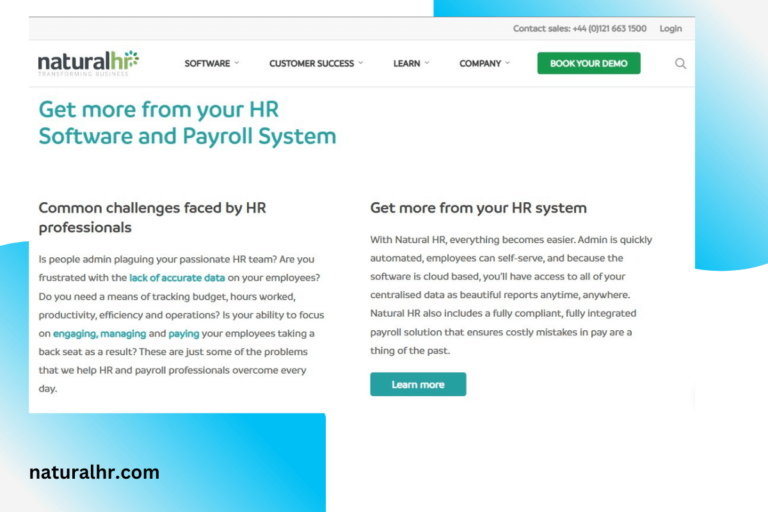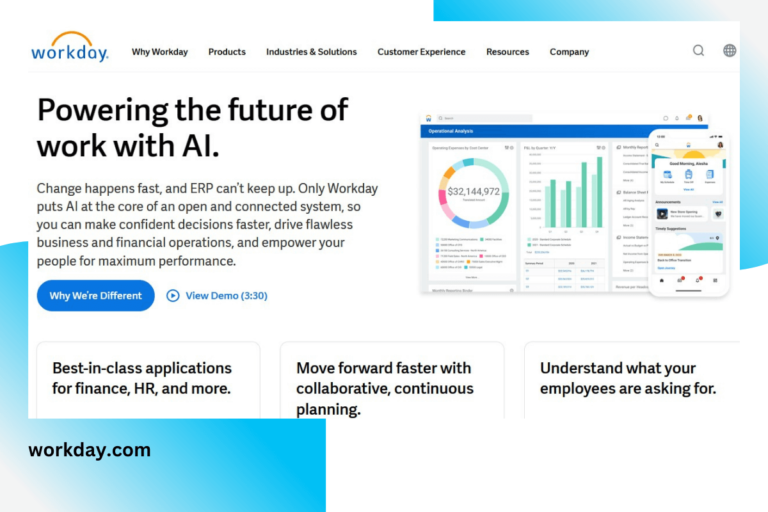Best hris and payroll systems – Navigating the realm of HRIS and payroll systems can be a daunting task, but with the right guidance, organizations can unlock their full potential. In this comprehensive guide, we delve into the intricacies of these systems, exploring their benefits, key features, and best practices for implementation.
From defining HRIS and payroll systems to comparing their functionality and advantages, this guide provides a thorough understanding of these essential tools for HR and payroll professionals. We also showcase case studies of successful implementations and identify emerging trends shaping the future of HR and payroll technology.
Overview of HRIS and Payroll Systems
HRIS (Human Resource Information System) and payroll systems are software applications that automate and streamline human resource and payroll processes within an organization. HRIS systems manage employee data, including personal information, benefits, performance evaluations, and training records. Payroll systems calculate and distribute employee salaries and wages, withhold taxes, and manage other payroll-related tasks.
Implementing HRIS and payroll systems offers numerous benefits, including improved efficiency, accuracy, and compliance. These systems automate repetitive tasks, reducing manual errors and freeing up HR and payroll staff to focus on more strategic initiatives. They also ensure compliance with complex labor laws and regulations, minimizing the risk of penalties and fines.
Additionally, HRIS and payroll systems provide valuable insights into workforce data, enabling organizations to make informed decisions and optimize their human capital management strategies.
Benefits of HRIS and Payroll Systems
- Improved Efficiency:Automation of tasks streamlines processes, reduces manual errors, and frees up staff for more strategic initiatives.
- Enhanced Accuracy:Automated calculations and data validation minimize errors, ensuring accurate and reliable information.
- Increased Compliance:Systems help organizations comply with complex labor laws and regulations, reducing the risk of penalties and fines.
- Improved Decision-Making:HRIS and payroll systems provide valuable insights into workforce data, enabling organizations to make informed decisions and optimize their human capital management strategies.
Key Features of HRIS and Payroll Systems
HRIS and payroll systems are essential tools for managing human resources and payroll functions within an organization. These systems offer a range of features that streamline HR processes, improve accuracy, and enhance efficiency.
Essential Features of HRIS Systems
HRIS systems provide a comprehensive suite of features designed to manage various aspects of human resources, including:
- Employee information management:Store and manage employee data, including personal details, contact information, job history, and performance evaluations.
- Recruitment and onboarding:Manage the recruitment process, from job posting to candidate screening and onboarding new hires.
- Performance management:Track and evaluate employee performance, set goals, and provide feedback.
- Compensation and benefits administration:Manage employee compensation and benefits packages, including salary, bonuses, and insurance.
- Time and attendance tracking:Track employee time and attendance, calculate hours worked, and generate payroll.
- Reporting and analytics:Generate reports and analytics on HR metrics, such as employee turnover, absenteeism, and performance.
Key Features of Payroll Systems
Payroll systems are specifically designed to manage payroll processes, ensuring accurate and timely payments to employees. Key features of payroll systems include:
- Payroll processing:Calculate employee salaries, deductions, and taxes based on time and attendance data.
- Direct deposit:Transfer employee salaries directly into their bank accounts.
- Tax calculations:Calculate and withhold federal, state, and local taxes from employee paychecks.
- Benefits administration:Manage employee benefits deductions, such as health insurance, retirement contributions, and paid time off.
- Garnishment processing:Process garnishments, such as child support or student loan payments, from employee paychecks.
- Reporting and compliance:Generate payroll reports and comply with government regulations, such as filing tax returns and issuing W-2 forms.
Comparison of HRIS and Payroll Systems: Best Hris And Payroll Systems

Human resource information systems (HRIS) and payroll systems are two important software applications that can help businesses manage their human capital. While both systems share some similarities, they also have some key differences. In this section, we will compare the functionality of HRIS and payroll systems, and discuss the advantages and disadvantages of each system.
HRIS systems are designed to manage all aspects of the employee lifecycle, from recruitment to retirement. They typically include modules for applicant tracking, onboarding, performance management, compensation and benefits, and employee development. Payroll systems, on the other hand, are designed to manage the payment of employee wages and taxes.
They typically include modules for time and attendance tracking, payroll processing, and tax reporting.
Functionality
- HRIS systems typically have a wider range of functionality than payroll systems. They can be used to manage all aspects of the employee lifecycle, from recruitment to retirement.
- Payroll systems are designed specifically to manage the payment of employee wages and taxes. They typically have a narrower range of functionality than HRIS systems.
Advantages
- HRIS systems can help businesses improve their efficiency and productivity by automating many HR processes. They can also help businesses improve their decision-making by providing them with access to real-time data about their employees.
- Payroll systems can help businesses ensure that their employees are paid accurately and on time. They can also help businesses comply with payroll regulations.
Disadvantages
- HRIS systems can be expensive to implement and maintain. They can also be complex to use, and require a significant amount of training for employees.
- Payroll systems can be less expensive to implement and maintain than HRIS systems. However, they can still be complex to use, and require a significant amount of training for employees.
Best Practices for Implementing HRIS and Payroll Systems

Implementing a new HRIS and payroll system can be a complex and time-consuming process. However, by following best practices, organizations can increase the likelihood of a successful implementation.
Selecting the Right System
The first step in implementing a new HRIS and payroll system is to select the right system. This involves:
- Defining the organization’s needs:Organizations should start by identifying their specific needs and requirements for a new HRIS and payroll system.
- Evaluating different systems:Once the organization’s needs have been defined, it can begin evaluating different systems.
- Selecting a system:After evaluating different systems, the organization should select the system that best meets its needs.
Implementing a New System
Once a new HRIS and payroll system has been selected, the organization can begin the implementation process. This involves:
- Planning the implementation:The organization should start by developing a detailed implementation plan.
- Configuring the system:The organization should then configure the system to meet its specific needs.
- Testing the system:The organization should test the system thoroughly before going live.
- Going live:The organization should go live with the new system on a planned date.
- Monitoring the system:The organization should monitor the system after going live to ensure that it is meeting the organization’s needs.
Case Studies of Successful HRIS and Payroll Implementations
Organizations that have successfully implemented HRIS and payroll systems have experienced numerous benefits, including improved efficiency, reduced costs, and increased employee satisfaction. Here are some case studies of successful HRIS and payroll implementations:
Company A
Company A, a large manufacturing company, implemented a new HRIS and payroll system in 2019. The system has helped the company to streamline its HR and payroll processes, reduce costs, and improve employee satisfaction. The company has also seen a significant increase in the accuracy of its payroll data and a decrease in the number of errors.
Company B
Company B, a mid-sized healthcare provider, implemented a new HRIS and payroll system in 2020. The system has helped the company to improve its employee onboarding process, reduce the time it takes to process payroll, and improve employee communication. The company has also seen a significant increase in the number of employees who are using the system’s self-service features.
Company C
Company C, a small retail company, implemented a new HRIS and payroll system in 2021. The system has helped the company to improve its employee scheduling, reduce the time it takes to process payroll, and improve employee communication. The company has also seen a significant increase in the number of employees who are using the system’s mobile app.
These are just a few examples of the many successful HRIS and payroll implementations that have been completed in recent years. By carefully planning and executing their implementations, organizations can achieve significant benefits from these systems.
The most effective HRIS and payroll systems streamline operations, enhance efficiency, and provide valuable insights. For organizations seeking a cost-effective solution, there are numerous options available, including hr system software free . These free HR systems offer essential features to manage employee data, track time and attendance, and automate payroll processes, ensuring that businesses can optimize their HR functions without incurring significant expenses.
By leveraging the capabilities of these free HR systems, organizations can reap the benefits of best-in-class HRIS and payroll solutions without straining their budgets.
Emerging Trends in HRIS and Payroll Systems
The HRIS and payroll landscape is constantly evolving, driven by technological advancements and changing business needs. Here are some of the latest trends shaping the future of these systems:
Cloud-Based HRIS and Payroll
Cloud-based HRIS and payroll systems have become increasingly popular, offering benefits such as scalability, cost-effectiveness, and accessibility. These systems are hosted by a third-party provider and can be accessed from anywhere with an internet connection.
Artificial Intelligence (AI) and Machine Learning (ML)
AI and ML are being used to automate tasks, improve decision-making, and provide personalized experiences for employees. For example, AI-powered chatbots can answer employee queries, while ML algorithms can analyze data to identify trends and patterns.
Employee Self-Service, Best hris and payroll systems
Employee self-service portals are becoming more common, allowing employees to access their HR and payroll information and make changes online. This empowers employees and reduces the workload for HR and payroll departments.
Integration with Other Systems
HRIS and payroll systems are increasingly being integrated with other systems, such as time and attendance systems, performance management systems, and benefits administration systems. This integration streamlines processes and improves data accuracy.
Impact on the Future of HR and Payroll
These trends are having a significant impact on the future of HR and payroll. They are leading to increased efficiency, reduced costs, and improved employee satisfaction. HR and payroll professionals need to be aware of these trends and adapt their strategies accordingly.
Final Review
As the HR and payroll landscape continues to evolve, organizations must embrace the latest technologies to streamline their operations, enhance employee engagement, and gain a competitive edge. By leveraging the insights and best practices Artikeld in this guide, businesses can make informed decisions and implement HRIS and payroll systems that drive success and empower their workforce.
Clarifying Questions
What is the primary function of an HRIS system?
HRIS systems centralize and manage employee data, automating HR processes such as hiring, onboarding, performance management, and benefits administration.
How do payroll systems differ from HRIS systems?
Payroll systems focus specifically on calculating and distributing employee compensation, including salaries, bonuses, and deductions, while HRIS systems provide a broader suite of HR-related functions.
What are the key benefits of implementing an HRIS and payroll system?
HRIS and payroll systems streamline HR and payroll processes, reduce manual errors, improve data accuracy, enhance employee self-service, and provide valuable insights for decision-making.
 HRIS System
HRIS System
